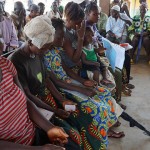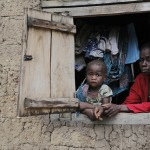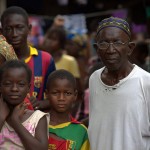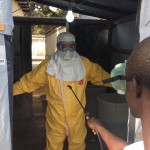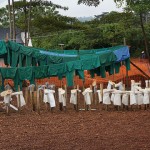Informal health workers are important care providers in the region and continue to be so during the current Ebola Virus Disease (EVD) outbreak. Many are well respected and trusted members of the community who can mobilise large numbers of people for a particular activity and lend legitimacy to a particular programme.
‘The Ebola epidemic ravaging parts of West Africa is the most severe acute public health emergency seen in modern times. Never before in recorded history has a biosafety level four pathogen infected so many people so quickly, over such a broad geographical area, for so long’ (Margaret Chan, 26th September 2014, WHO). This report focuses on the local beliefs and practices around illnesses and death, the transmission of disease and spirituality, which affect decision-making around health-seeking behaviour, caring for relatives and the nature of burials.
Continue reading →
Held as part of the African Studies Association conference 2014, Ebola: The Challenges united an esteemed panel of speakers to discuss ways in which academia can mobilise to support those effected by the ebola outbreak.
The current outbreak of Ebola Virus Disease in Upper West Africa is the largest ever recorded. Molecular evidence suggests spread has been almost exclusively through human-to-human contact. Social factors are thus clearly important to understand the epidemic and ways in which it might be stopped, but these factors have so far been little analyzed. The present paper focuses on Sierra Leone, and provides data on the least understood part of the epidemic – the largely undocumented spread of Ebola in rural areas. Various forms of
Continue reading →
Case Studies on Contemporary Social Issues book by Barry Hewlett and Bonnie Hewlett. In this case study, readers will embark on an improbable journey through the heart of Africa to discover how indigenous people cope with the rapid-killing Ebola virus. The Hewletts are the first anthropologists ever invited by the World Health Organization to join a medical intervention team and assist in efforts to control an Ebola outbreak. Their account addresses political, structural, psychological, and cultural factors, along with conventional intervention protocols as problematic to achieving
Continue reading →
It can be exhausting nursing a child through a nasty bout with the flu, so imagine how 22-year-old Fatu Kekula felt nursing her entire family through Ebola. Her father. Her mother. Her sister. Her cousin. Fatu took care of them all, single-handedly feeding them, cleaning them and giving them medications. And she did so with remarkable success. Three out of her four patients survived. That’s a 25% death rate — considerably better than the estimated Ebola death rate of 70%.
Haemorrhagic fevers have, par excellence, captured popular and media imagination as deadly diseases to come ‘out of Africa’. Associated with wildlife vectors in forested environments, viral haemorrhagic fevers such as Ebola, Marburg and lassa fever figure high in current concern about so-called ‘emerging infectious diseases’, their hotspots of origin and threat of global spread. Outbreak narratives have justified rapid and sometimes draconian international policy responses and control measures. Yet there is a variety of other ways of framing haemorrhagic fevers. There present different views concerning
Continue reading →
Viruses that cause haemorrhagic fevers have been popularized by the media as fierce predators that threaten to devastate global populations. Professor Melissa Leach says there is much to learn from combining local and scientific knowledge in dealing with these deadly pathogens.
As the worst Ebola epidemic on record shows no signs of abating in West Africa, fear and ignorance are increasingly said to be playing a role in its continued spread. Meanwhile, local practices such as the consumption of bushmeat and deforestation are the go-to explanations for the epidemic’s underlying causes. However, decades of anthropological research in the region by STEPS Centre and Institute of Development Studies (IDS) researchers, indicates not only that this picture is an over-simplification, but that disease control policies based on these ideas may be unhelpful.
Over two thirds of all human infectious diseases have their origins in animals. The rate at which these zoonotic diseases have appeared in people has increased over the past 40 years, with at least 43 newly identified outbreaks since 2004. In 2012, outbreaks included Ebola in Uganda, yellow fever in the Democratic Republic of Congo and Rift Valley fever (RVF) in Mauritania. Zoonotic diseases have a huge impact – and a disproportionate one on the poorest people in the poorest countries. In low-income countries, 20%
Continue reading →



